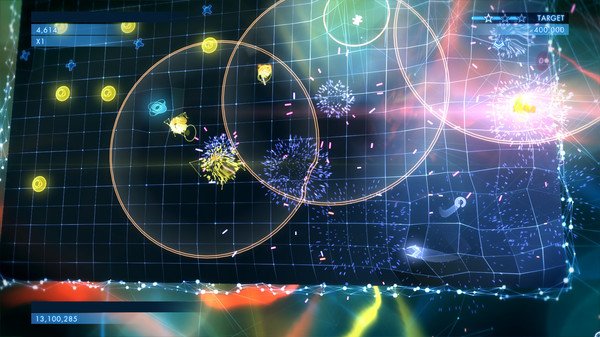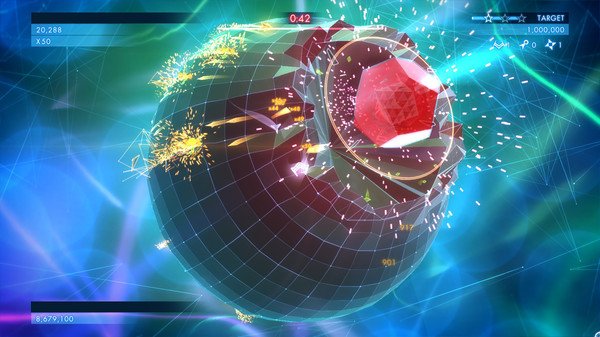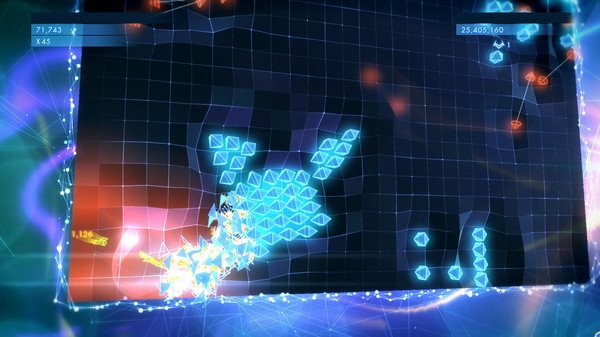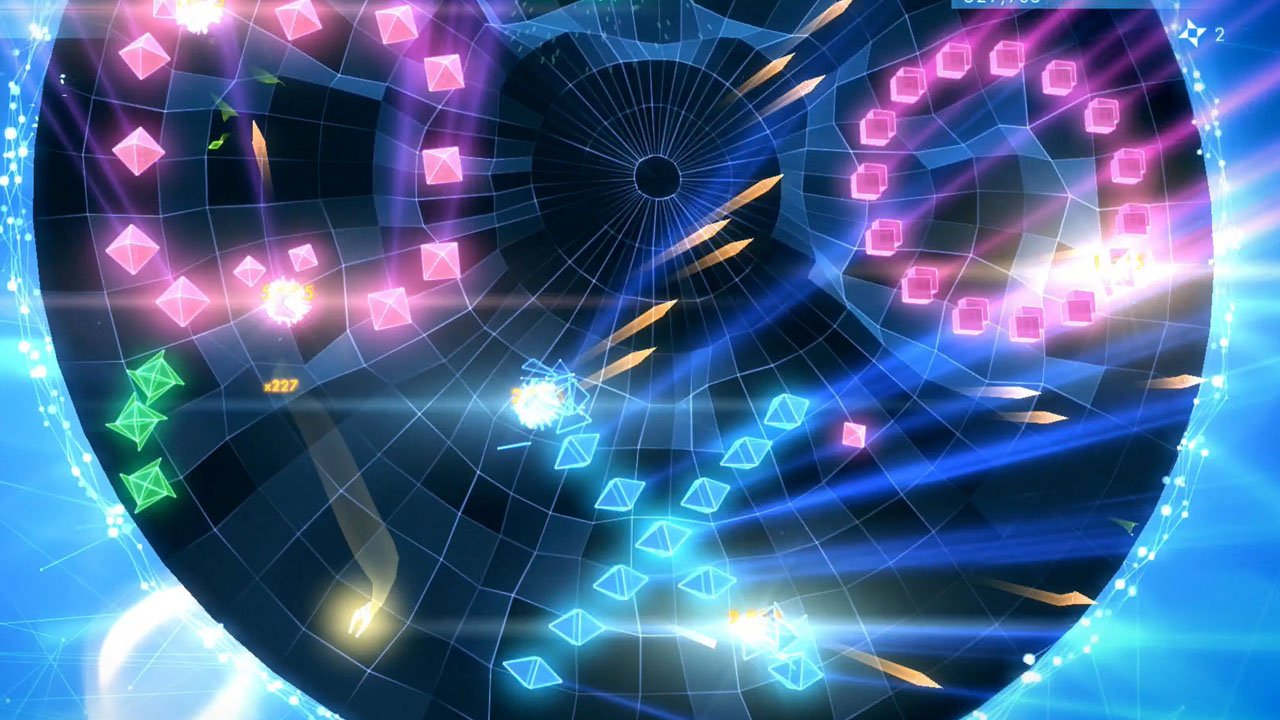If ever there was a game to test a player’s ability to withstand shining, flashing lights, shapes, and symbols, it’s Geometry Wars. Now in its third iteration, the series is still rocking its old school twin-stick arcade game play vector-inspired graphics style. Of course, this time, the game is on the “new” gen, so it’s been ratcheted up to insane disco levels of flashing, shiny retro goodness.
Geometry Wars 3: Dimensions is like a boundless pile of neon candy. It’s fast, hard, and frustrating, but addicting and satisfying to play. The new-retro graphics recall the era of vector graphics, Major Havoc, and seedy arcades where those of us of a certain age fretted away our youth one quarter at a time. In fact, Geometry Wars—as a whole—captures the spirit of classic coin-op shooters better than almost anything else out there, including attempts to revamp actual arcade classics.


If you’re unfamiliar with the series, it’s been around a while. The original game was a brilliant homage to classic shooters that was actually included as a mini-game in Project Gotham Racing 2 (by developer Bizarre Creations) on the original Xbox. It went solo with the Retro Evolved re-release on the Xbox 360, and has hit the DS, Wii, and iOS since then.
The basic premise is generally just to survive onslaughts of menacing geometric shapes and heavy enemy fire for as long as possible, while racking up points shooting things. Not much has changed since 2003 really. Geometry Wars 3 retains all the visceral, frenetic charm of the original. Dimensions comes equipped with 50 levels that include time survival modes, boss fights, point battles, and several other variations on the theme.
Gameplay is simple. The left stick moves your ship around the screen and the right stick shoots in whatever direction you point it. Controls are smooth and precise, and the action is hypnotic thanks to the game’s vivid light show presentation. A thumping, ambient techno beat powers all the action and the overall soundtrack is a powerful bass production machine.
Like most games of this sort—especially the Super Stardust series—Geometry Wars 3 thrives on amazing reflexes, determination, and the ability to take a lot of virtual pain. The game is blistering at times. Many of the levels require the player to attain a certain amount of points within a narrow timeframe. Reaching enough points for a one-star ranking is generally doable, but to earn three-stars, expect to put in a lot of practice.
Unfortunately, to reach higher levels requires earning a lot of stars, so it’s inevitable that most players will be replaying earlier levels a lot. This necessary repetition to advance in the game can be frustrating, especially for those not particularly invested in retro shooters. So, to really enjoy Geometry Wars 3 requires accepting the steep progression curve.


Dimensions includes both an arcade mode, full of standalone missions, and an adventure mode, which is, well, also full of levels that are only barely connected. There’s no narrative thread in the game. The focus is entirely on action, which works perfect for the game play. Beyond single-player modes, there are both online team and local coop modes.
The online team games—there are two—are excellent. One is a team-based boss battle, where each team tries to inflict the most damage on the boss, while the other is similarly tasking teams with earning more points by destroying the most enemies. In an interesting twist, the second game includes spawn towers that players can capture and use to spawn enemies in.
Local coop is a much more straightforward two-player version of the standard game, where two players fight waves of bad guys. We really would like to see more game modes for local play, as finding games online has thus far proven difficult at best.
Geometry Wars: Dimensions isn’t a complex, deep, or particularly meaningful game. It doesn’t need to be. What it is, however, is a damn near perfect example of a brilliant twin-stick shooter with retro roots done properly with modern technology. It’s fast, furious, and fun, and there are fewer compliments higher than that for a shooter.






